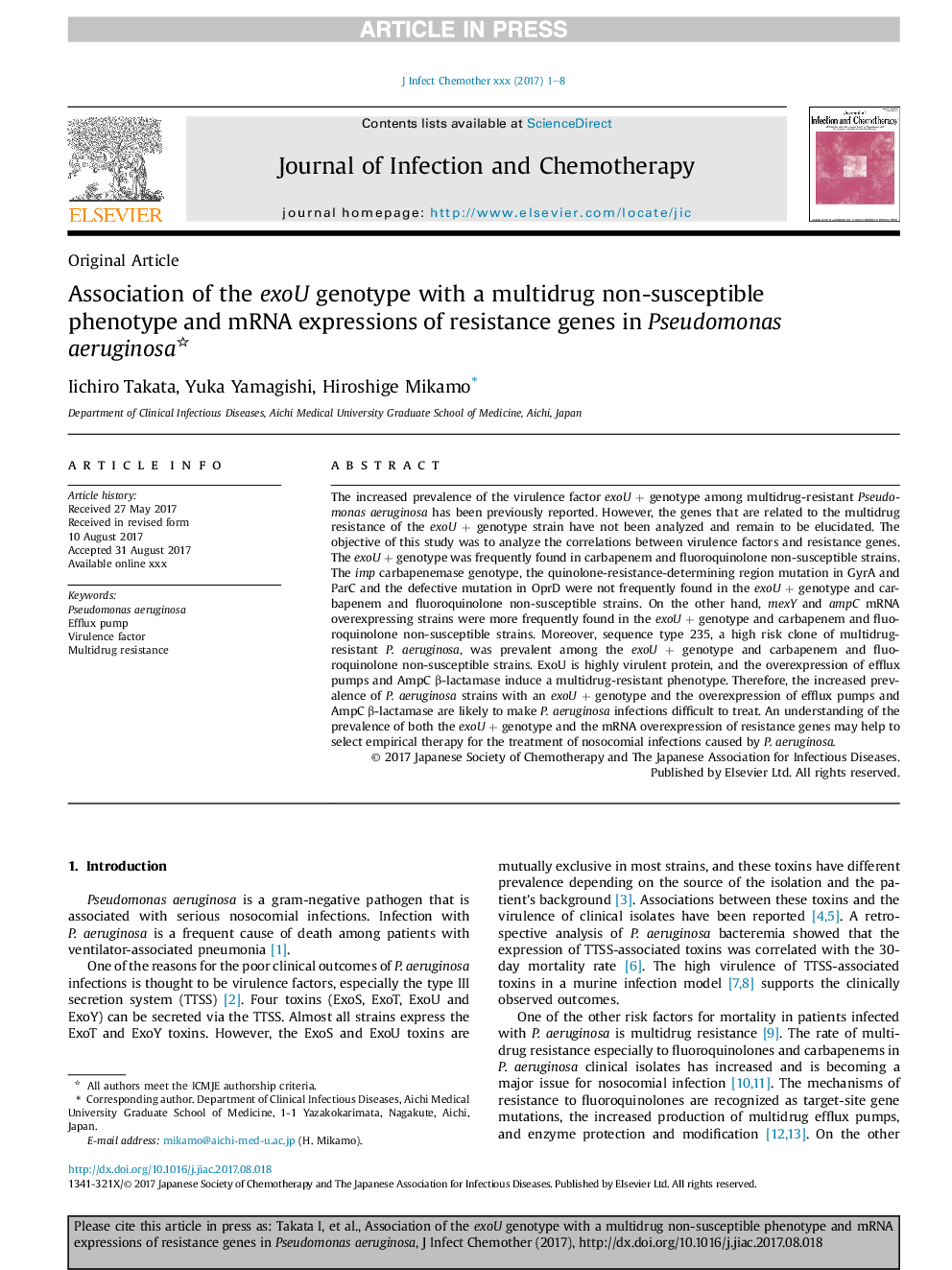| Article ID | Journal | Published Year | Pages | File Type |
|---|---|---|---|---|
| 8740755 | Journal of Infection and Chemotherapy | 2018 | 8 Pages |
Abstract
The increased prevalence of the virulence factor exoU + genotype among multidrug-resistant Pseudomonas aeruginosa has been previously reported. However, the genes that are related to the multidrug resistance of the exoU + genotype strain have not been analyzed and remain to be elucidated. The objective of this study was to analyze the correlations between virulence factors and resistance genes. The exoU + genotype was frequently found in carbapenem and fluoroquinolone non-susceptible strains. The imp carbapenemase genotype, the quinolone-resistance-determining region mutation in GyrA and ParC and the defective mutation in OprD were not frequently found in the exoU + genotype and carbapenem and fluoroquinolone non-susceptible strains. On the other hand, mexY and ampC mRNA overexpressing strains were more frequently found in the exoU + genotype and carbapenem and fluoroquinolone non-susceptible strains. Moreover, sequence type 235, a high risk clone of multidrug-resistant P. aeruginosa, was prevalent among the exoU + genotype and carbapenem and fluoroquinolone non-susceptible strains. ExoU is highly virulent protein, and the overexpression of efflux pumps and AmpC β-lactamase induce a multidrug-resistant phenotype. Therefore, the increased prevalence of P. aeruginosa strains with an exoU + genotype and the overexpression of efflux pumps and AmpC β-lactamase are likely to make P. aeruginosa infections difficult to treat. An understanding of the prevalence of both the exoU + genotype and the mRNA overexpression of resistance genes may help to select empirical therapy for the treatment of nosocomial infections caused by P. aeruginosa.
Related Topics
Life Sciences
Immunology and Microbiology
Applied Microbiology and Biotechnology
Authors
Iichiro Takata, Yuka Yamagishi, Hiroshige Mikamo,
